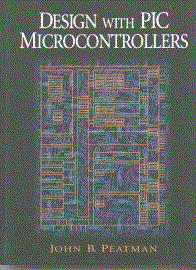Book Review
Design with PIC Microcontrollers
John Peatman
Prentice Hall, 1998
ISBN 0-13-759259-0
PIC microcontrollers have gained a tremendous popularity in the past few years. Microchip Technology has shipped over a billion PIC microcontrollers. In spite of its popularity, the PIC architecture still remains elusive to a number of practicing engineers. This book written by an accomplished author and university professor ‘Dr Peatman’, is an attempt to provide some structure to the learning of PIC microcontrollers. The book is intended to be used as a text for the students of computer science and engineering. Practicing engineers interested in learning about PIC architecture may also find it useful.
Dr Peatman has tried to bring out the main features of mid range PIC16Cxx series of microcontrollers. Starting with a short introduction to PIC revolution, the reader is introduced to PIC CPU, internal code and program memory structure and the PIC instruction set. The concept of indirect addressing using PIC’s INDF register is well illustrated. Program examples are provided to demonstrate the techniques for extending the reduced instruction set of PIC. A chapter is devoted to MPASM (free assembler available from Microchip Technology).
Perhaps the book’s biggest strength lies in its coverage of PIC timers and its interrupt structure. Author has discussed in fair details the sources of interrupt, interrupt latency, and its impact on program design. The IIC and SPI peripheral operation is discussed from an application point of view, leading to front panel I/O, which can be used in some embedded applications. The chapters on analog to digital converter and asynchronous serial communication discuss the basic peripheral operation, while detailing the associated control registers. The appendix contains the block diagrams of various PIC16C series of microcontroller and their pin outs.
Micro Control
Journal
